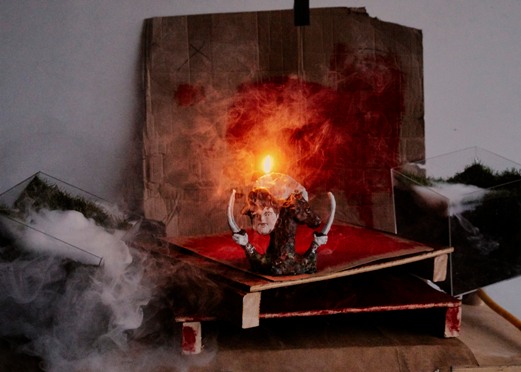What does history smell like?
By Sophie Haigney
Anxiety sweat. Horsehair. Wet grass and soil after a rain. Sulphuric compounds from gunpowder. Eau de cologne containing rosemary, bergamot and bitter orange. A touch of leather.
This might have been what Napoleon’s retreat from the Battle of Waterloo in 1815 smelled like. At least, these are some of the elements that Caro Verbeek, an art historian and olfactory researcher, tried to incorporate when she was reconstructing the smell, in partnership with perfumer Birgit Sijbrands, scent designer Bernardo Fleming of International Flavours & Fragrances and the Rijksmuseum in Amsterdam.
“Wars are extremely smelly,” Verbeek said. “Soldiers don’t write about their injuries as much as they write about the terrible sounds and smells. So we know more about them.” We also know that it had rained the night before the battle, that anxiety sweat smells different from normal sweat, and that there were thousands of horses on the field. And we know the ingredients of Napoleon’s perfume — he wore litres of it every day and carried a bottle in his boot. These were some details Verbeek relied on during the reconstruction, which is part of a project called ‘In Search of Lost Scents’. The scent is offered in the Rijksmuseum as part of tours — on strips of paper or in a necklace with tiny pumps — alongside Jan Willem Pieneman’s 1824 painting of the scene.
—
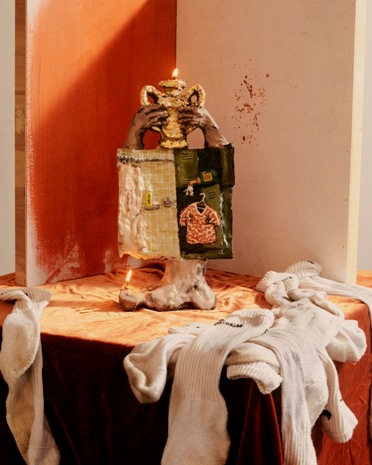
Locker Room Celebration, 1988
In 1988, the Netherlands national soccer team won the UEFA Championship, beating the Soviet Union 2-0. Celebration ensued. According to nosewitnesses, the smell of the locker room included dirty clothes, coconut shampoo, sweat, smelly feet, leather, grass and Champagne. There were notes of a coconut oil that a player, Ruud Gullit, wore, as well as a deodorant called Fresh Up and a shower gel called Badedas. The smell was moist, mouldy, sweet, warm, cheesy, leathery and sweaty. It smelled like victory. (Scent created by Caro Verbeek and Jorg Hempenius of iScent)

Pomander Scent From the Book of Secrets, 16th and 17th Centuries
Pomanders were metal balls of fragrances, often worn on chains in the late Middle Ages, through the 17th century. The wealthy believed they would mask bad smells and protect them from disease. (Pomanders also sometimes doubled as prayer nuts.) This reconstructed scent accompanies a 17th-century pomander at the Rijksmuseum and was made from a recipe in a 16th-century Book of Secrets in the museum’s collection. It contains nutmeg, clove, cinnamon, rose and artificial civet. (Scent created by Caro Verbeek and Laura French of International Flavours & Fragrances)
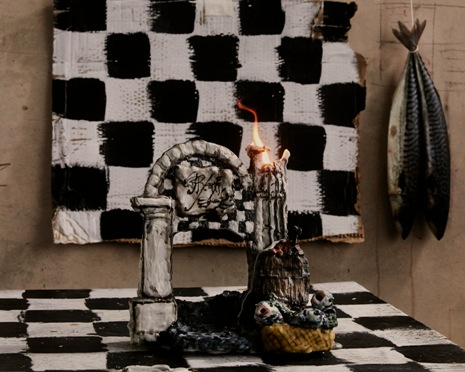
The Smell of Money: Amsterdam Stock Exchange, 17th and 18th Centuries
The Amsterdam stock exchange opened in 1611. It was a public building that housed a tourist market. The reconstructed smell includes notes of fresh air; river water from the Amstel, which flowed underneath; sweat and musk from traders crowded on the floor; wood; and stone. There were also hints of nutmeg and clove, because merchants often went back and forth to warehouses where spices were stored. And there was the distinct smell of paper money. (Scent created by Inger Leemans and Jorg Hempenius of iScent)
—
In the growing field of smell research, scientists, artists, historians and cultural heritage specialists are coming together to work on what is perhaps the trickiest sense to preserve. Some are working on trying to conserve the smells of our times — especially those which may not exist in a few decades. Others, like Verbeek, who has a PhD in the history of art, are working on reviving and reconstructing some of the lost scents.
These are some of the areas that Odeuropa, an international research consortium on olfactory heritage that was recently awarded a 2.8 million euro grant, is focused on studying.
Inger Leemans, a cultural heritage professor and the project leader of Odeuropa, said, “We’re also asking, what are the fragrant places of our countries, or Europe?”
“We’re losing them fast, of course, because time never stops, but is it valid to try to safeguard those places or reconstruct them?” she said. “How do you bring the past to the nose?”
History is rife with smells that we will never be able to reclaim. Despite the detailed efforts of Verbeek, we’ll never really know what the Battle of Waterloo smelled like. Or, for that matter, London in the Middle Ages, or New York in the 1930s. We may not even be able to recapture the smells of our childhoods, based in particular locations and characterized by long-gone things.
Many scents that are already vanishing include mothballs, burning piles of leaves in autumn, typewriter ribbons, early formulas of sunscreen and the lingering smell of cigarettes. And unlike, for instance, colour or music, smell isn’t broken as easily into universally accepted components. Although technology has made it easier to isolate the chemical compounds of a smell, odours are also highly context dependent. There are functionally an infinite number of scents that could be preserved.
But preserving smell requires more than just olfactory information. Cecilia Bembibre, a researcher at the Institute for Sustainable Heritage at University College London, is working toward something of a systematic means of archiving smell, using a mix of chemistry and more qualitative tools.
She has done this for the smell of old books, which might be described as endangered. The first step is to seal the book off and allow the smell to concentrate for several days. Then, a technique called gas chromatography-mass spectrometry is used to separate and identify each chemical compound to create something like a recipe, or a template for historians. She also interviews volunteers and asks them to experience the smell and describe it.
—
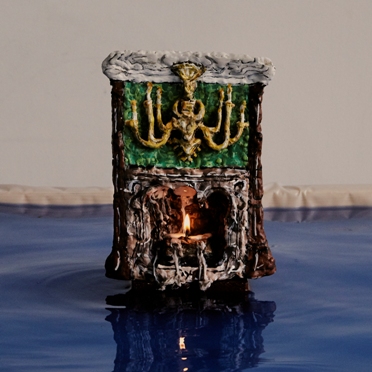
Lost Amsterdam Canal House, 18th Century
The Beuning Room was part of a canal house that was demolished in 1896. Its interior is preserved at the Rijksmuseum. It might have smelled moist and mouldy, because of the surrounding water, and like resin and spices, which were thrown into the fire to mask the smell and keep the house dry. From the outdoors, wafting in: sulphur, the canals’ sewer smells, horses, lime blossom trees. (Scent created by Caro Verbeek and Birgit Sijbrands of International Flavors & Fragrances)
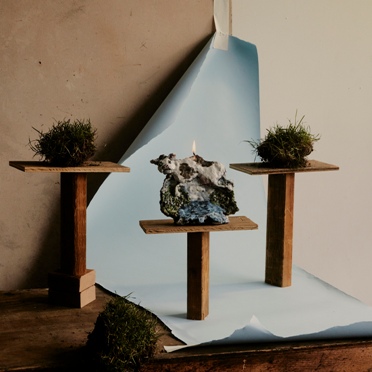
Mastenbroek Village Polder, 2005
Extracts of clouds, water, cattle, grass and earth. This is the scent of the polder, a threatened Dutch landscape, captured in the perfume “L’Essence de Mastenbroek.” (Scent created by Birthe Leemeijer, Alessandro Gualtieri of Nasomatto Perfumes and residents of Mastenbroek)
Napoleon’s Retreat at the Battle of Waterloo, 1815
War: gunpowder, horses, wet earth, anxiety sweat, leather. Overlaid with a reconstruction of Napoleon’s perfume, called acqua mirabilis, which contained rosemary, bergamot and bitter orange. Napoleon had a version of this perfume made when he was exiled to Saint Helena. (Scent created by Caro Verbeek, Birgit Sijbrands and Bernardo Fleming of International Flavours & Fragrances in partnership with the Rijksmuseum)
—
Bembibre said that applying the scientific method — a universal language and standardized techniques — is a challenge with smell. “When you ask a volunteer to describe a smell,” she said, “they tend to use words related to their experience, so they’ll say, ‘This smells like the bottom of my grandma’s drawer.’” Bembibre wants to fuse the scientific approach with the more sociological aspects of cultural heritage work for a hybrid technique of archiving smell.
The field of scent research is gaining recognition and funding internationally, but smell has long been less studied than the other senses. It can be hard, Bembibre said, to convince historians, sociologists and other researchers that smell is just as significant as other intangible heritages like a dance or religious ritual. “It’s gaining ground, but it’s a bit of an oddity,” she said.
Bringing smell into a museum context can be one way to make art more accessible, particularly for visitors who are blind or partially sighted, and those who have dementia. Marie Clapot, associate museum educator for accessibility at the Metropolitan Museum of Art, has worked over the last few years to integrate smell into the museum. “A lot has been done with touch, with tactile approaches, movement and sound, and it kind of dawned on me, we haven’t been doing much with smell,” Clapot said. “It’s not just about, ‘Oh, it’s nice to smell something.’ It’s one way you can make an art object accessible.” It is also a way, she said, to bring a number of people into the conversation about art who might not be moved by traditional art history.
Clapot has worked to create smells that can be paired with objects and be integrated into tours, using scent strips dipped in oil. She created a scent inspired by a sculpture called “Spring in the Guise of Flora” by Pietro Bernini, based on the fruit and flowers of the Italian spring, and a Pierre Bonnard painting that featured the clash of warm and cool colors. This last one included elements like sandalwood and patchouli to evoke warmth with cooler smells like methyl ionone.
“If you bring the immersive aspect of the scent, it really helps a person to develop a story and image around the object,” Clapot said.
Other researchers have approached cultural preservation of smell through the larger lens of place. “Smell is incredibly linked to its context,” said Kate McLean, a graphic designer and smell researcher at Canterbury Christ Church University. “So we will like a smell of fish in a fish market but think it’s strange if we smell of fish in a public park, maybe.” McLean tries to preserve smells in their contexts, leading “smell walks” all over the world. She has mapped smellscapes in places like Staten Island and Pamplona, Spain, linking people’s sensory impressions with place.
In one project, titled ‘Two Centuries of Stink’, she mapped the smell of Widnes, an industrial town in Wales, dating to the 1860s, relying on testimonies from residents and written sources. Many of the smells that long defined Widnes were generated by chemical processes that have been banned. Recently, McLean worked with health care workers, patients and visitors in Britain to make a smell map of hospital corridors, identifying odours that waft from different directions: burned chicken or toast from the waiting room; “metallic stale blood” from the operating theatre; and the first cup of tea after general anaesthetic, described as “cozy and warm.”
—
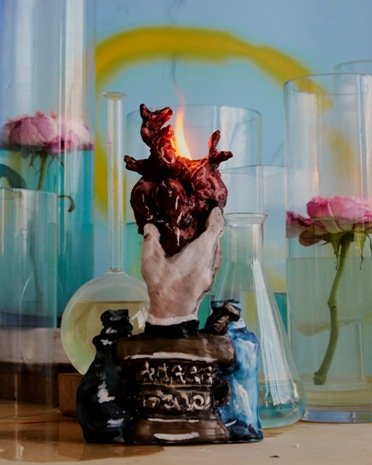
The Embalming of William the Silent, 1584
When William the Silent, Prince of Orange, was killed in 1584, his court physician rushed to embalm his body the same day, to preserve it for eight to 10 years. The reconstructed smell is fresh, sweet, pleasant and slightly medicinal. It has notes of myrrh, oregano, sage, olibanum, styrax, benzoe, lavender, thyme, rosemary, iris, rose and musk. (Scent created by Caro Verbeek in partnership with Historisch Museum Den Briel)
—
Verbeek approaches past smells by attempting to recreate versions of them, as she did with the Battle of Waterloo, making a perfume of sorts that might be associated with historical events, people and works of art. She has captured the odour of the locker room of the Dutch soccer team after its 1988 European championship victory (coconut oil, sweat, Champagne, a deodorant called ‘Fresh Up’, dirty clothes and a specific brand of body wash). She also used medical history to try to replicate the smell of the embalming of William the Silent, Prince of Orange after his assassination in 1584. “This one actually smells fresh and medicinal and pleasant,” Verbeek said, noting that more than 30 ingredients were used in his embalming, including myrrh, oregano, sage, lavender, rosemary, iris and musk. She often works from texts, like a court medical history, using her own sense of smell and by interviewing “nosewitnesses,” as in the case of the Dutch soccer team.
The scents of other disappearing and threatened environments include one in the Netherlands, called a polder, a low-lying tract used for irrigation and dairy farming. In recent years, polders have been subject to floods and the repurposing of land for factories or housing. Some fear they may begin to disappear as sea levels rise. In 2005, an artist named Birthe Leemeijer and Alessandro Gualtieri of the perfumer Nasomatto worked with residents of Mastenbroek, a small polder village, to make a perfume based on this smell called “essence de Mastenbroek,” which was snapped up by many Dutch people abroad who missed home.
“You can take a photograph of the land but it’s hard to capture the smell,” Verbeek said.
Still, part of the beauty and poignancy of the project is that it only approaches the smell of a polder — it can never fully recreate it. “Whatever methods you use, whether it’s gas chromatography or analyzing molecules from historical objects, it can never be a real reconstruction,” Leemans said. “Even if you had the complete description of an 18th-century perfume and you could recreate it, it would still smell different on your 21st-century body. It will always be an interpretation.”
-New York Times


